Gift Guide for Alzheimer’s & Dementia Patients
Coloring Books for Adults
Coloring has been shown to reduce stress and agitation, as well as provide an outlet for self-expression. It improves hand-eye coordination and helps maintain motor function. It also is a great way to have grandchildren and grandparents participate in an activity together!
Music Player
Unlike some MP3 players, new music players are large, friendly easy to use. You can load them with custom songs or listen to pre-loaded classics. People of all ages know the benefits of listening to music, and this makes it easy for those with memory problems to listen to music, skip songs, and change the volume.
Automatic Pill Dispenser
Remembering to take medication can be a huge hassle, especially if the patient is often confused about what day of the week it is. This pill dispenser will only dispense pre-loaded medications at the right time and in the right dosage, every day. It also rotates old doses away, so no more double-dosing!
Buy or Make an Activity Mat
Activity Mats are mats of fabric with pockets, zippers, strings, buttons, bells, beads and other tactile objects that patients can play with instead of fidgeting. They focus attention, stimulate, entertain, and exercise the hand muscles. Many handmade mats can have toys or photographs sewn on.
Family Calendar
Those with Memory Issues will probably have a calendar or two in the house- why not make one a Family Photo Calendar as a visual reminder of loved ones? You can also make customized frames, books, pillows, mugs and so much more with image-publishing services.
Dolls have been used as a form of therapy for patients. The dolls help give them a sense of purpose and something to nurture in a world where everyone is taking care of them. They have a calming effect, can be used to facilitate social interaction with others and provide tactile stimulation.
Products to Help Seniors Age-In-Place
If your parents have the desire to age in place, there are products and tools available to help with any deficiencies they may have. Living at home can be a safe and healthy option and allow them to stay independent.
Here are some products and tools to help your loved one age in place:
1. Medication Adherence- It can be a potentially dangerous scenario for seniors who are noncompliant with their medication regimen. Products are available to help your loved one remember to take their medication at the right time. e-pill Medication Reminders offers a line of products ranging from a simple pillbox, pillbox timers, wearables (reminder watch), and automatic pill dispensers. These products will help your senior “Never Forget to Take their Medications Again!

For more information on medication reminder products visit: https://www.epill.com
2. Cell Phone and Smartphones- The Jitterbug offers big buttons, large text, large screen and simple menus.
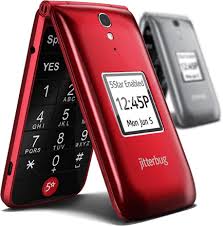
For more information on the Jitterbug cellphone visit: https://www.greatcall.com/phones/jitterbug-flip-cell-phone-for-seniors-v2
3. Emergency pendant, fall detection- worn around the neck or wrist will alert first responders or preprogrammed numbers of family members if your senior is in need of emergency help.
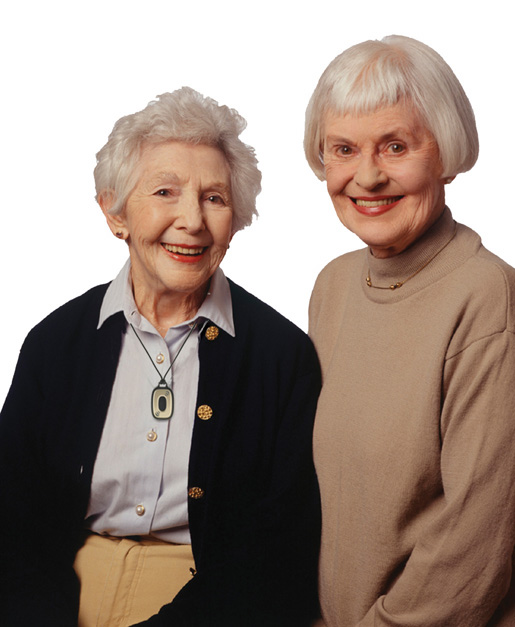
For more information visit: https://www.consumer.ftc.gov/articles/0316-personal-emergency-response-systems-health-information-older-people
4. Video monitoring- Allows you to have visual contact with your senior. You can gauge how they are doing thru your interactions with them and see the state of their living situation. Many senior enjoy face-to-face interactions versus a phone call.
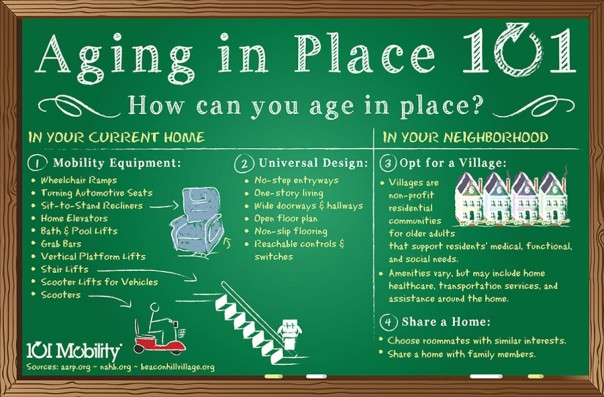
“Aging in place” means to keep seniors in their own home for as long as possible. Living alone is not an easy task, especially when you are a senior. There’s a lot of hazards that you have never realized and they could be very dangerous. There are many solutions out there for you to choose from. One of the best solutions is to have a professional to inspect the house, so you have nothing to worry.
Aging-In-Place Home Ideas
Aging-In-Place can be made easier with a few small additions or enhancements to each room in your home. As we age it helps to consider accessibility, which is easier to achieve with a simple layout, free space, grab bars, and good lighting throughout all rooms. Let’s take a look at some specific rooms.
Kitchen:
The kitchen can be made more accessible by changing the height of cabinets and appliances, and ease of access to items inside of cabinets.
If you have a budget for renovation, it may be worth consulting a Certified Aging-In-Place Specialist or your local cabinet-maker.
A few smaller installations you can do to help someone age-in-place in their kitchen include:
• a shallow/motorized sink
• Hands-free or lever-handled faucet
• Easy-to-reach water filtering devices
• “D” shaped pulls/handles on cabinets, doors, and drawers
• Pull-Out Shelves to Lower and Upper Cabinets
All appliances should be well-lit, easy to use, and easy to see!
Bathroom:
Plan for the use of canes, wheelchairs, walkers or similar assistive devices by making sure the bathroom has plenty of free space.
Ensure the toilet is at a proper height or purchase a seat extender.
Installing grab bars is an easy and economic way to increase safety in the bathroom. They can be placed on the interior or exterior of the tub or shower, as well as near the toilet to help with sitting and standing. Grab bars are no longer all cold and metal- today many styles and colors are available to match your taste.
Shower seats, anti-slip coating, and adjustable shower heads can make showers much more accessible. walk-in tubs can also be considered.
Bedroom:
Safety handles can be installed on the bed to allow easier access and reduce the potential for falling. Much like grab bars, these handles no longer look so clinical and can complement the decor of the room.
Having a working phone beside the bed may also be important in case there is a need to call for help. this phone should be corded or have a backup battery in case of power outage.
Cleaning out clutter in bedrooms is key! Storing heavy items or items you might use regularly on shelves can lead to accidents or things falling. Closets and Bedrooms should, again, be well-lit to avoid the possiblity of tripping!
Looking for more ideas? Head over to:
https://ageinplace.com/at-home/
https://www.aarp.org/home-garden/housing/info-01-2011/aging_in_your_own_space.html
https://www.houzz.com/aging-in-place http://www.nextavenue.org/8-things-consider-remodeling-age-place/
PRN Medications – An Introduction
Some medications come with specific instructions for use every day, such as “Take 1 tablet by mouth every 6 hours.”
Other medications are only used when needed for a specific situation, such as when you have a cold, allergies, constipation, or pain. Some of these medicines are prescribed for you by your physician while others can be purchased at your local pharmacy.
These medications that are taken “as needed” are known as “PRN” medicines. “PRN” is a Latin term that stands for “pro re nata,” which means “as the thing is needed.”
If you are prescribed a medicine to take “only as needed,” the pharmacist should provide you with clear instructions about how and when to take it. Some examples for PRN medications include:
acetaminophen
albuterol
alprazolam
aluminum hydroxide
bisacodyl
cetirizine
cyclobenzaprine
diazepam
diphenhydramine
docusate
hydrocodone
ibuprofen
loperamide
lorazepam
magnesium hydroxide
metaxalone
morphine
nitroglycerin
ondansetron
oxycodone & combinations
polyethylene glycol
prochlorperazine
pseudoephedrine
sildenafil
sumatriptan
tramadol
trazodone
zolmitriptan
zolpidem
Patients often like to be mindful of when they last took their dose of PRN Medication, since they are not taking it on a regular schedule. The e-pill Kitchen Safe is a tamper-resistant pill box and count-down timer that can ensure patients do not take too many pills. It will “lock out” the patient from taking their medication until a certain interval of time has passed.
The e-pill TimeCap is a small cap that fits on a standard prescription bottle. It displays the last time that the bottle was opened, so the patient knows exactly how long it has been since they took their medication.
More tech-savvy patients can also try the App Pill Logger, which allows the user to record a history of what meds have been taken. This may be useful if you are using several PRN Medications.
Remember to always ask your pharmacist if you have a question about how often PRN Medications should be taken!
Caregiver? Career?
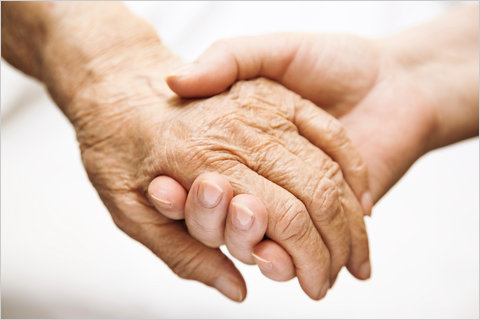
There are 44 million unpaid caregivers in the United States and the majority of them are women. Being an unpaid caregiver could be stressful and sometimes close to being impossible. Some women think that they have a good employee and a good daughter at the same because they have to worry about their career and their elderly parents. Is there a perfect way to balance that? Would you choose your elderly parents over your career or the other way around?
Women lost estimated $324,000 in wages because they want to be a good daughter. That is a good amount of money that they have lost. It would be cheaper to hire someone to hire someone to take care of their elderly parents. Women spend 60% of their time being a caregiver. Part of them would miss their promotions or raises at work because of taking care of their elderly parents. Some companies do not like employees to take time off too often, even though it’s because of their elderly parents.
Companies should work with their employees about taking care of their elderly parents. Women and men have to take care of their elderly parents at some point, but they want to keep their career at the same time. Companies should understand their situations and find a solution to help them. Communication is the key to keep a good relationship with their employees. They will work harder if they treat them well. It is not easy to find the balance of being a caregiver and being a good employee. What would you choose if you have to choose? Caregiver? Career?
https://www.usatoday.com/story/opinion/2017/07/25/caregiving-career-its-not-fair-choice/503712001/
Benefits for Employees that are also Caregivers

It’s estimated over 65 million people, nearly 30% of the U.S. population, cares for a family member. On average, they devote 20 hours per week to caregiving. This can be a problem for employers – or a new way to attract and retain talent.
“Caregiving Benefits”– such as time off for caregiving, flexible or remote work hours, on-site childcare and eldercare consultants – are becoming crucial for workers to have the ability to stay in the workforce. Statistics from a collaboration between the National Alliance for Caregiving and AARP show that the majority of employed caregivers have had to make adjustments to their work, including potentially leaving their jobs. The situation will continue to grow, since people in their 80s or older will make up 37% of Americans by 2050.
According to 2013 Pew Research report, 47% of adults in their 40s and 50s have a parent over 65 and at least one child under 18 or an adult child still receiving financial assistance from mom and dad. That puts real strain on the “Sandwich Generation”. Luckily, employers are becoming aware of the situation and are starting to provide benefits to workers in order to attract or retain them. The following list (found in this article has some great examples:
Paid time off for caregiving. Half of the companies interviewed have expanded their PTO (paid time off) programs in recent years with at least two (Caring.com and Home Instead®, Inc.,) going so far as to implement unlimited PTO. Deloitte made national headlines in 2016 by allowing employees to take up to 16 weeks of PTO annually for caregiving, including care for aging family members.
Workshops and webinars. At Pfizer, Inc., free webinars provide information and recommendations for caregivers facing different caregiving situations. Emory University offers about a dozen in-person workshops and webinars each year with experts on common caregiving issues such as legal issues, family conversations and managing the care of a loved one living with dementia.
Legal and/or financial advice. Employees at Bank of America take advantage of up to four free legal consultations annually on topics such as preparation of wills, healthcare directives and proxies, and financial power of attorney agreements.
Care consultations. One of the hallmarks of the University of Arizona’s eldercare assistance program is free consultations available to faculty and students that include a gerontologist who develops a caregiving plan for employees.
Emergency back-up care. At CBS, employees benefit from up to 15 days of emergency backup care services with most of the services subsidized by CBS with the exception of a small co-pay asked by the employee. At Home Instead, Inc., employees are eligible for reduced hourly rates when they engage Home Instead professional CAREGiversSM for their loved ones.
As the “Silver Tsunami” approaches, employers will have to react- and the workplace as a whole may change quite a bit.
“My employer’s program to support caregivers was a lifeline,” said Matthew Skahill, 51, an associate director for Astellas, a pharmaceutical company. “To know my employer not only understood what I was going through but provided services to help me through this time in life makes a huge difference in being able to manage it all. I feel like they are sincere in wanting to make a difference in my life.”
Sources:
https://www.forbes.com/sites/nextavenue/2015/04/14/a-new-era-companies-supporting-caregivers/#48579c8a7b13
http://www.benefitspro.com/2015/10/08/why-employers-need-to-help-employees-who-are-careg
http://www.caregiverstress.com/stress-management/daughters-in-the-workplace/benefits-working-caregivers-want/
http://www.hrdive.com/news/are-caregiving-benefits-the-next-silver-bullet-for-retention/448795/
Time to Use Tech Devices to Treat Chronic Pain

Opioid addiction is a serious issue in the US. On average of 33,000 people die from opioid overdose and the number has been growing every year. Opioid medications are easy to get prescribed from Doctors and Doctors are willing to prescribe to their patients. What if there are technology devices out there that could ease the chronic pain problems? Would you let your Doctor insert a wire into your body?
There is something called the SPRINT Peripheral Nerve Stimulation (PNS) System. It reduces pain without drugs and it only takes few minutes for the Doctor to insert the wire into your body. It has less side effect than drugs and it is not addictive. This device is on the market and it is FDA approved.
We hope that there will be more technology to help us fight addiction in the future. We understand medications are necessary, but addiction is a major as of now.
Technology in Addiction Recovery Treatment
People have become more reliant than ever on technology to make their lives easier in a variety of ways. There is a surplus of technological resources at our fingertips video communication, cell phone, computer, virtual reality, etc. Virtual reality is becoming increasingly common, and there seem to be apps for all aspect of our lives, no matter how obscured it may be. The same apps we use to play games and chat with friends are now utilized in the medical field to help fight alcohol and drug addiction, changing the way the disease is treated.
Opioid dependence is a serious public health issue. In some opiate replacement therapy with buprenorphine, apps and a secure automatic pill dispenser (http://www.epill.com/medowheelsecur.html) are used in conjunction with one another.
To see a list of apps that can help you on the path to recovery, click here: https://www.addictionrecoveryguide.org/resources/mobile_apps
National Resources to Help Fight the Opioid Epidemic
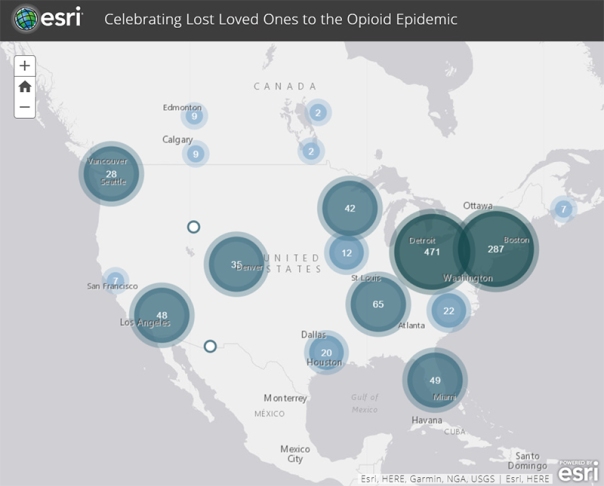 This month at e-pill we are taking a look at how technology is helping fight drug addiction. Today we’d like to share some online resources that are helping to educate and spread awareness about the epidemic.
This month at e-pill we are taking a look at how technology is helping fight drug addiction. Today we’d like to share some online resources that are helping to educate and spread awareness about the epidemic.
The U.S. Department of Health & Human Services has an easy-to-navigate resources index on Treatment and Recovery. If you want to learn more about treatment options or find treatment, this page can help.
SAMHSA has a free Helpline runs year-round and receives nearly 65,000 calls per month! 1-800-662-HELP (4357) is the number.
If you have or find prescription drugs that are no longer needed or outdated, it may not be clear where you can bring them. We found Rx Drug Drop Box, which gave us 3 locations within 25 miles of our office. We were able to find more locations by checking with our State. Hopefully there will be more interactive maps for this in the future. There are currently some interactive maps that are based on the county or town you may reside in.
Speaking of interactive maps, Esri’s Jeremiah Lindemann has created a global map titled “Celebrating Lost Loved Ones to the Opioid Epidemic”. This interactive memorial map (shown above) does just that- it honors those who have lost their lives and shows just how big this epidemic is, and how close to home it hits.


